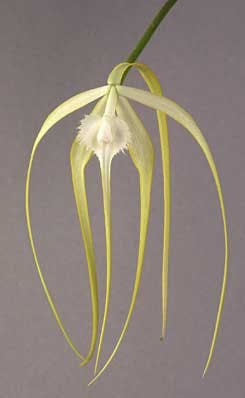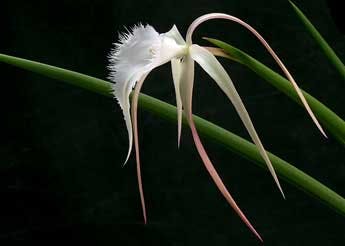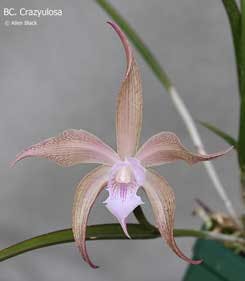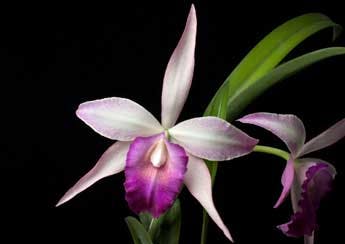Brassavola appendiculata A.Rich. & Galeotti

Weird and wonderful, Brassavola appendiculata will add a conversation piece to any collection of orchids. Visitors often comment, "that's an orchid?". B. appendiculata is the type species for the genus, yet unique with its fringed lip with its long, tapered tip. The species passed through several genera since it was first known as Helleborine floribus albis, cucullatis Plum. (1703) based on a drawing of a plant from Haiti. In 1813 this species was used by R. Brown to establish the genus Brassavola.
This orchid can be found in the West Indies, Mexico, Central America and Colombia, Trinidad, Guyana and Venezuela. As might be expected with such a widely distributed species, it can be adapted to a wide range of cultural environments and generally, is easy to grow. One would also expect such a widely distributed species to display considerable variation in flowers. Surprisingly B. cucullata produces relatively consistent flowers regardless of where the plants originate from. The biggest difference one sees from plant to plant is in the color of the flowers. Although generally concolor white, flowers can have more or less golden petals and sepals and I have seen some examples that have almost reddish flowers. I suspect that these colorful variations might be as much due to cultural factors as genetics because the same plant can produce white flowers one year, and golden ones the next. In any event, there is usually more color on the outside surfaces of the flowers than the insides and the color tends to darken as the flowers age.

Rhynchovola David Sander (Brassavola appendiculata x Rhyncholaelia digbyana)
Like other members of the genus, B. cucullata has terete leaves that are even more pencil-like than its popular cousin, Brassavola nodosa. Whereas the latter species produces mostly upright plants, the subject of this essay often displays a semi-erect or drooping nature. This drooping habit makes B. cucullata well suited for growing on a mount or in a basket. Not only do the plants droop, but so do the flowers. It is precisely these droopy flowers that draw you to, or repel you from this orchid. Either you like the total departure from the full & round standard, or you find it distasteful.
Relatively little hybridizing has been done with B. appendiculata. The best-known hybrid is Rhynchovola David Sander (Brassavola cucullata x Rhyncholaelia digbyana). The frilly lip of both parents combines to make a large exotic flower with grace and beauty. A few other successful hybrids are being registered as breeders begin to recognize the species' desirable, although dominant, characteristics. As with other members of the genus, B. cucullata has a sweet fragrance at night which is passed on to its hybrids.

Brassocattleya Crazyulosa (B. appendiculata x C. granulosa). Hybrid by Allen Black
Being a low-elevation species from the tropics, B. appendiculata can be grown within an intermediate temperature range of 55° to 60° F at night and 70° to 85° F during the day. It will easily tolerate higher temperatures during the summer . Here in South Florida our summer daytime highs will be in the low 90's from July into October. Plants will also tolerate occasional low temperatures below 50° F as long as it is not for prolonged periods and plants are dry. If you choose to grow B. cucullata mounted you will probably need to water it three or more times per week depending on other cultural factors and seasonal growth patterns. Potted plants will need less water but you will need to contain the long terete leaves with a ring stake. If you apply a half-strength solution of balanced fertilizer every week or two, your orchids will grow and flower better.

Rhynchobrassoleya Crownfox Telstar 'Crownfox' AM/AOS, 81pts (Rlc. Toshie Aoki x B. appendiculata)
This article has been updated to correctly reflect that this species is Brassavola appendiculata, not cucullata
References:
Withner, Carl. 1992. The Cattleyas and their Relatives, Volume V. Timber Press. Portland
I. McLeish, N.R.Pearce & B.R.Adams. 1995. Native Orchids of Belize. A.A.Balkema. Rotterdam
Greg Allikas, October 2009








